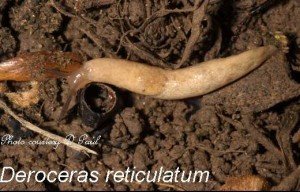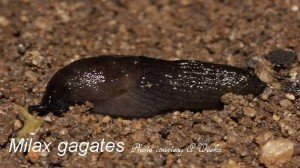The wet spring, early summer conditions have favoured the return of a pest not seen for many years – slugs! Damaging slug populations, reported in seedling crops in northern NSW and southern Queensland, have totally destroyed some pulse crops. Increased slug activity may also be due to the increase in zero/minimum till and stubble retention practices which favour slug and snail development and survival. This is because the organic content of paddocks increases under such systems, providing an increased food source especially to young slugs and snails.
Other high slug risk factors include prolonged wet weather, trash blankets, weedy fallows and a previous slug history. Slugs are best controlled before the crop is planted.
Below are some management recommendations following consultation with consultants in badly affected areas and colleagues in southern states, where slugs and snails (molluscs) are more prevalent.
Monitor populations
Determine the slug risk in your paddocks prior to planting. Monitor regularly so slug numbers can be detected early, ideally before seeding as there are more control options at this time. To get an estimate of the numbers of slugs present; place wet carpet squares, hessian sacks or tiles on the soil surface. They should at least be 32 cm x 32 cm (10% of a square metre). Place slug pellets under them and check after a few days. Count the number of slugs under and around each square. Multiply the numbers by 10 to get an estimate of slugs per m2
If an average of more that one (1) slug per trap is found, the slug problem is significant. If more than eight (8) slugs are found per trap the problem is severe.
Ideally, fallows should be bare so the only food source for slugs is the baits. For this reason, baits applied post-emergence are less effective than pre-emergent baits, as slugs often prefer the emerging seedlings.
Chemical control
Take action if there is significant slug activity in the pre-crop fallow, 2 weeks before planting. Two equally effective bait types are registered for slug control in field crops – those based on metaldehyde, e.g. SlugOut and those based on an iron chelates (EDTA complex), e.g. Multiguard.
Metaldehyde based baits are highly toxic to mammals and birds (Schedule 5 poisons) and must be spread evenly to avoid heaping which might attract non target animals. Metaldehyde based products are registered in pulses for use prior to and up to the 4 leaf stage.
Iron chelate based baits are specific to slugs and snails (molluscs) and slaters (crustaceans) and have low toxicity to mammals and birds (no poison schedule). They have no impact on carab beetles which are key snail predators and hence are the preferred IPM option. Iron chelate based compounds are registered for use in the bare fallow prior to planting, and also in crop boundaries. While of low toxicity, iron chelate baits are attractive to some animals and birds. The bait’s mild alkalinity may cause certain animals to vomit, especially dogs. For this reason, spread the bait evenly to avoid heaping which might attract dogs and birds.
Insecticide sprays targeting other soil pests, such as armyworms and cutworms, are ineffective against slugs. Where there is extreme slug pressure, baits alone will not bring slugs under control.
Cultural control
Cultural practices which discourage slugs and snails include cultivation (2 shallow discings) to bury trash and levelling the seedbed with a roller to crush clods, but not the use of press wheels which creates a humid furrow. These strategies are at odds with zero/minimum till and stubble retention practices aiming to conserve soil moisture.
Cultural practices to reduce high slug numbers may have to be employed periodically, as chemical control alone is unlikely to eliminate slugs in farming systems that retain stubble blankets.
Slug samples
To help build up a slug incidence data base, and to determine which species are causing problems in NE Australia, please collect and forward slugs to Australian slug expert Michael Nash at CESAR, Bio21 Institute, Melbourne University, 30 Flemington Rd., Parkville, Victoria 3010. Ph (03) 83 442 521. Mob 0417 992 097
Post/courier slugs in a jar with moist paper and record the location (including GPS coordinates). Also record the soil type, paddock history (e.g. zero or minimal till or regular cultivation) and the paddock’s cropping history.
Article by Hugh Brier and Kate Charleston



At last recognition of of this problem in QLD.
Good work team.